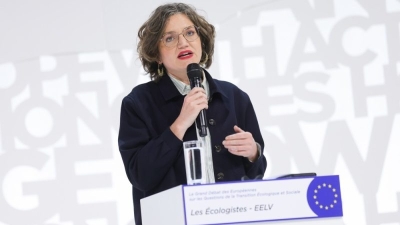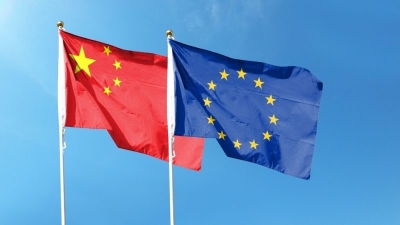Interconnecting the Connectivity Talks

Our connectivity ecosystem, comprising tech companies and telecoms operators – as well as the policy and regulatory environment they operate in – is evolving rapidly. Like other ecosystems, it is a community that relies on interdependencies for its success.
The way that people use the internet and engage with digital services is also changing. Some stakeholders argue policy changes have not kept pace. A public consultation, on the future of the electronic communications sector and its infrastructure, is underway as the Commission explores options for a new approach. The future of connectivity in Europe is surrounded by challenging questions – a few are more pressing than others.
Kamila Kloc, Acting Director, Connectivity, DG CNECT, European Commission, elevated the
issue of investment as she said: “As we look towards the fate of the future, current estimates suggest that we are looking at an investment gap of around 174 billion euros until 2030, linked to achieving the Digital Decade targets.”
Reinforcing the spirit of the Commission’s public consultation process, she added: “The
Commission has no proposal [… ] this consultation is designed to get the stakeholders’
opinions on the future of connectivity, including about the potential need for all players
benefitting from the digital transformation to fairly contribute to the required investments. We are open to hearing all views.”
What is required to capture the full technological potential of Europe’s connectivity
networks?
In recent years, connectivity in Europe has gone beyond merely making phone calls, sending text messages, and watching cable television. European citizens are welcoming technology into their homes and offices, making it a part of their lives by using wearables, monitoring the energy efficiency of appliances, and increasing interpersonal interactions through communication platforms. Digital transitions are progressing, and society is planning for even more that will leverage versatile digital applications, including virtual spaces.
Virtual spaces literally create new worlds where humans can explore medical advancements, experience safer training environments, and enhance experiential learning. As features and capabilities advance, more people and businesses want to use these services. Some analysts predict that, by 2026, 25% of people will spend at least one hour a day in virtual worlds engaging in professional, educational, or social activities.
The European Commission’s ongoing consultation is one component of the EU’s package of initiatives designed to ensure that Europe fully benefits from quality-of-life-improving
technologies.
Placing the focus on consumer interests and welfare, Cláudio Teixeira, Legal Officer, Digital
and Consumer Rights, BEUC remarked “Our priority is to put the spotlight on protecting
consumers when it comes to the topic of connectivity.” He also noted the importance of
ensuring that digital education, resource capabilities, and the mentalities of European citizens keep pace with the ‘digital revolution’ that Europe is undergoing.
How can the EU avoid over-regulation, which could make Europe less competitive in a global economy?
During the forum, Michel Van Bellinghen, Member, Management Board, BEREC & Chairman, BIPT Council, expressed a proclivity for supporting frameworks that spur competition and bring about innovation and favourable prices for consumers. He remarked, “It is important to maintain the balance, struck by co-legislators when adopting the Code, between promoting connectivity and access to VHCN, protecting competition and efficient investment, protecting citizens’ interests, and contributing to the development of the internal markets.”
Why is it important to keep the focus on a globally interdependent internet ecosystem?
There is a recognition within both the connectivity industry and the wider digital and technology sector that we are all part of an interdependent and evolving context. Access to a range of capabilities in the public, private, and civil society sectors will require testing and improving machine learning (AI), rolling out edge computing infrastructure to reduce latency for end-users and quantum computing to accelerate the way that we collect and analyse data to better understand the world around us.
Manufacturers of devices must collaborate with content providers and internet service
providers to make applications available for end-users. For instance, head-mounted displays, (used for augmented reality capabilities) require high resolution even beyond 4K.
Collaborative innovation is necessary to ensure that the hardware, software, and type of
connectivity network all function and perform for the end-user.
What kind of connectivity infrastructure would allow European citizens to reap the full benefits of these promising technologies and devices?
Shortcomings in performance-sensitive applications could hinder the development of new
applications with great potential. Without compatible infrastructure, these applications might pass Europe by. Audrey Scozzaro Ferrazzini, Senior Director, Government Affairs,
Qualcomm, stated “To achieve Europe’s digital transformation, it is crucial for telecom
infrastructure to meet 5G, and future 6G demands. Continuous innovation and investments are essential to driving the EU’s Digital Decade objectives.”
How can policymakers facilitate a dialogue that moves the connectivity community
closer towards even more holistic engagement across the value chain?
The European Commission consultation gives connectivity the attention that it warrants and sharpens the focus on the interrelationships and interdependencies that exist across the value chain of technologies.
It is equally important to protect innovation and investment in a mix of mobile and fixed
technologies. This will be necessary to meet long-term connectivity demands and support the digital capabilities of the future. A ‘whole-ecosystem mindset’ is paramount to constructive discourse. It also requires an approach that ensures legal certainty and balanced regulatory policies that allow all ecosystem participants to face and surmount the challenges that will accompany Europe’s digital transition.
To learn more about GIGAEurope’s work follow us on Twitter and LinkedIn.
Read more with EURACTIV




